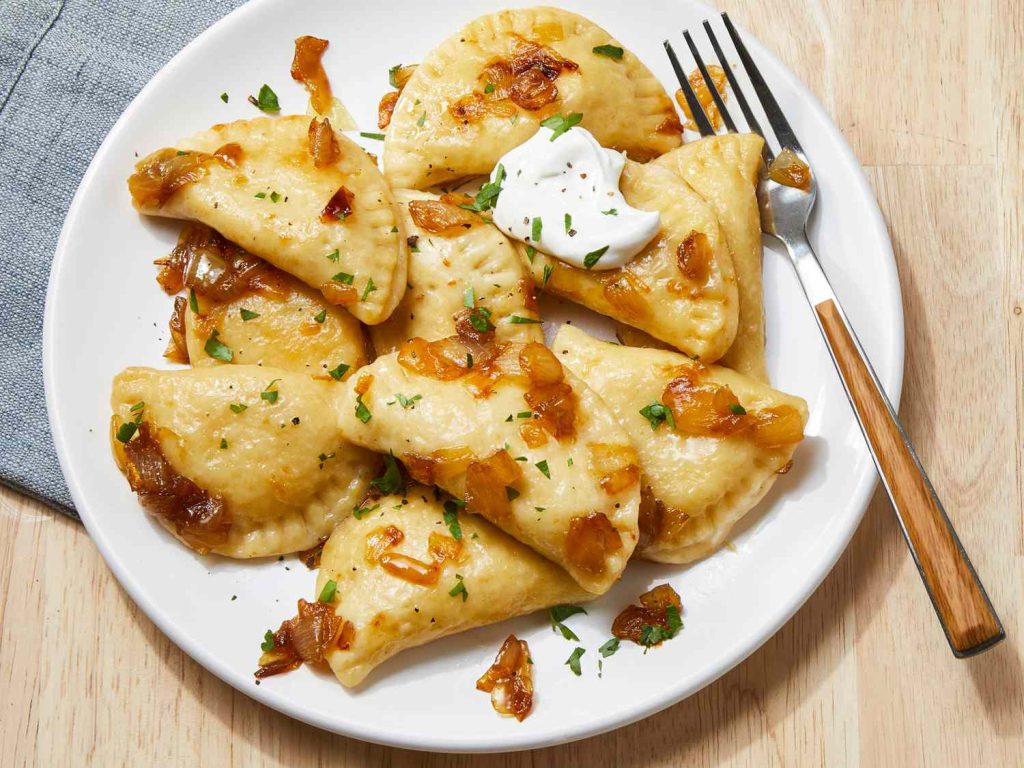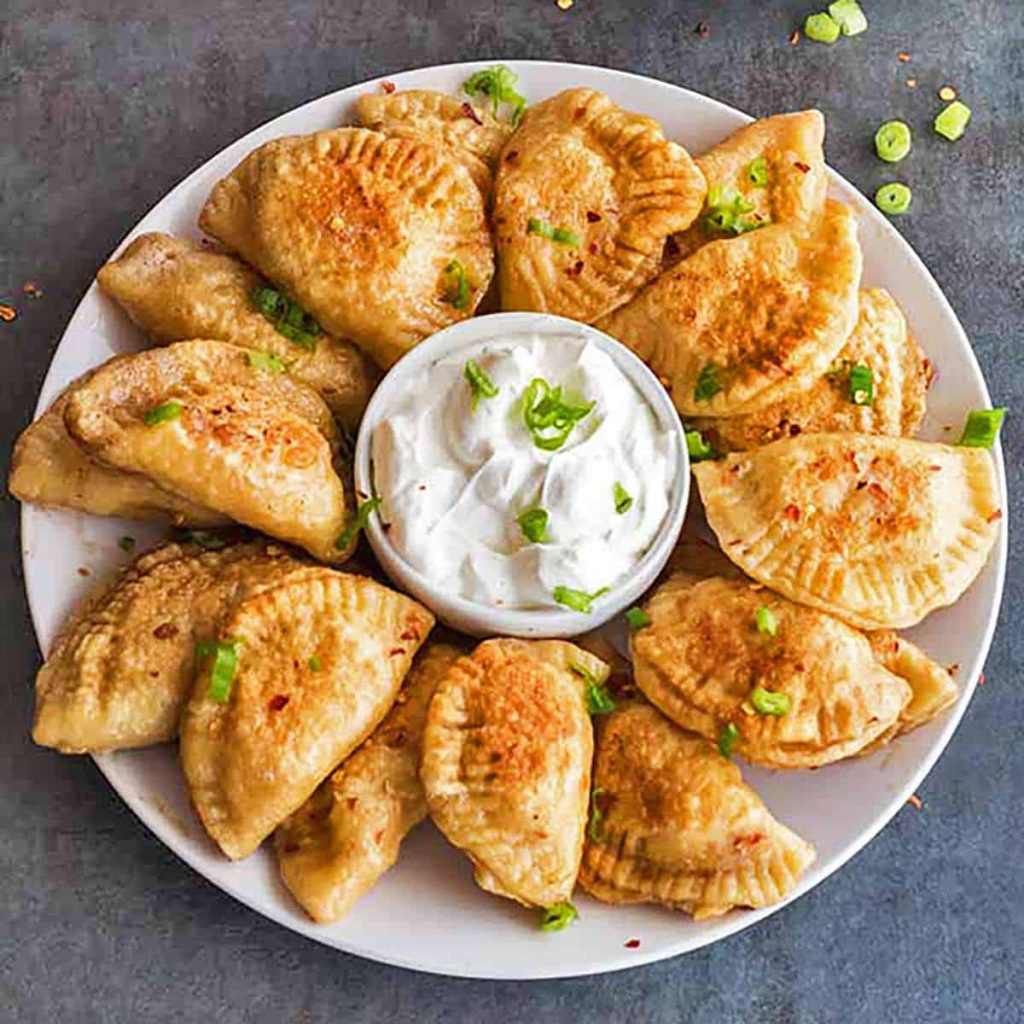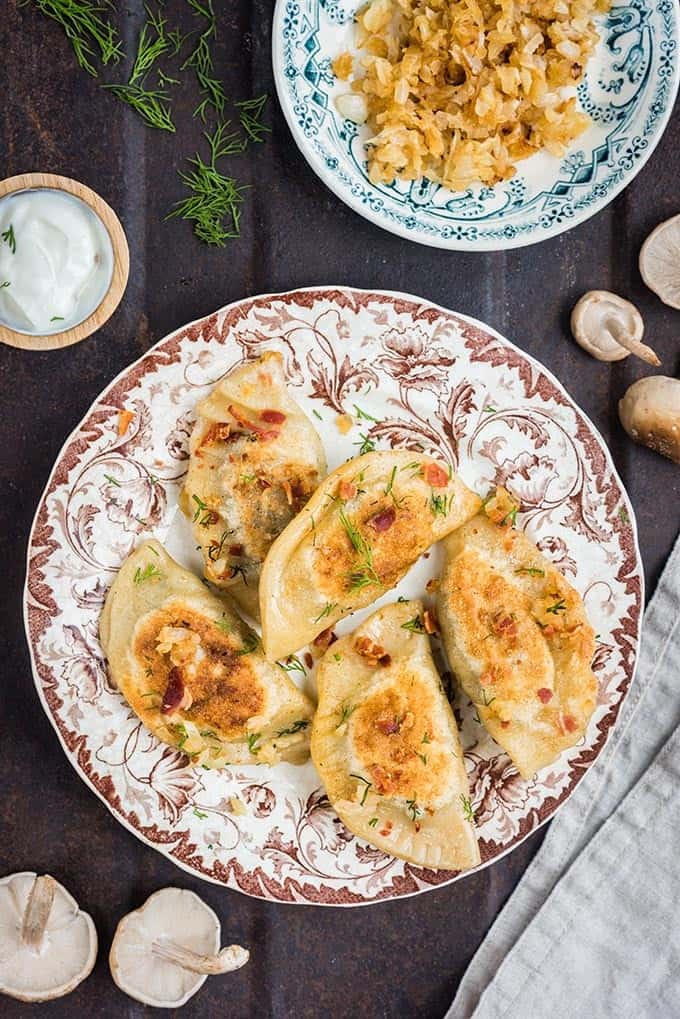Polish dumplings are called “pierogi.” The Polish people drew inspiration from the basic technique of Chinese dumplings but also added their own innovative twists.
Firstly, the fillings for pierogi are incredibly creative and diverse. They include meat fillings such as beef, lamb, pork, and chicken; vegetarian fillings like mushroom, sauerkraut, egg, and potato; fruit fillings such as strawberries, cherries, and blueberries; and even cheese fillings like cottage cheese and fresh cheese.

Secondly, the ways of preparing pierogi vary, including boiling, frying, and baking. In contrast to the Chinese tradition, Poles often sprinkle fried onions or minced meat on top of the dumplings. Additionally, they may serve pierogi with sauces such as tomato sauce or butter. Particularly, pan-fried pierogi are known for their rich and savory flavor. Unlike the Chinese preference for dipping sauce, Polish pierogi are enjoyed with toppings that add an extra layer of richness. The taste of pierogi is truly an experience on the taste buds.
The most distinctive dumplings in Poland are undoubtedly the ones baked in clay ovens. They are large, plump, resembling baked buns, and are usually served in plates of five or six. The price is relatively high, around 30 złoty, equivalent to about 55 Chinese yuan. It is indeed quite expensive. However, getting the chance to taste these baked dumplings is not an easy task, as one often has to wait for a long time before they are brought to the table. It seems to whet one’s appetite, watching people at neighboring tables enjoy their meal, while those waiting are already feeling quite hungry.

Once the baked dumplings are served, they are piping hot, making it a bit challenging to eat right away. Some prefer to savor and take pictures slowly. Then, they use a knife to cut the dumplings into bite-sized pieces, dip them in seasoning sauce, and use a fork to bring them to the mouth, savoring each bite slowly. It truly is a delicious experience, a culinary delight in every sense.
It seems like your text is repeated several times, but I’ll provide the English translation for the first part:
Many European countries are often referred to as “land of forests,” boasting abundant and tempting mushrooms in their woodlands. Polish mushrooms are particularly renowned, with supermarkets offering fresh mushrooms year-round. Sauerkraut and mushroom dumplings are also a popular and widely enjoyed dish among the populace.

Poland’s Christmas feast traditionally consists of 12 delicious dishes, and dumplings, being one of Poland’s most famous culinary delights, undoubtedly make an appearance on Christmas Eve. On this occasion, Poles abstain from consuming meat (except for fish), so the dumplings served on Christmas Eve typically feature fillings like sauerkraut and mushrooms. Some say that Poland’s Christmas Eve is filled with the flavor of sauerkraut, exemplified by dumplings filled with sauerkraut and accompanied by fish, as sauerkraut is considered versatile in the eyes of the Polish people. In fact, I’ve noticed that Polish culinary culture shares many similarities with Chinese traditions. Just like how we eat fish on New Year’s Eve, Poles also enjoy fish on Christmas Eve.

